Week 12 - Scientific Investigation and Medical Applications
Completion requirements
Week 12 - Scientific Investigation and Medical Applications
4. Viruses and Bacteria
Lesson 16
Science in Action 8
Pages 155-158
Lesson 16: Viruses and Bacteria
 |
One of the things that is most important to us as humans is our health. Though we can do much to remain healthy through our diet, rest, and exercise; we encounter other threats. Two of these are bacteria and viruses. Over the years these two groups of organisms have proven to be a major problem for our health. Through experimentation and medical research, we have learned many ways to fight these threats to our health. Bacteria and viruses can be helpful or harmful. When they are the harmful kind, they can cause many well known diseases such as colds, the flu, and AIDS. |
We will examine both bacteria and viruses from three points of view:
1. the nature of the organism
2. our natural defenses
3. defenses developed from medical research
The Nature of Bacteria
Bacteria are one celled organisms found often with living organisms. Some of these bacteria are beneficial such as the ones that live in your large intestine and make Vitamin K for your body. Unfortunately, many bacteria are harmful to humans. Some examples are the bacteria that cause tuberculosis, anthrax, whooping cough, food poisoning and even Ecoli infection.
Bacteria can use the nutrients from the human body to grow and multiply and once the numbers growing in the human body become large, we get really sick. The only solution is to prevent infection or to stop the bacteria in the body from growing.
Our Natural Defense against Bacteria
| Our first defense against bacteria infection is our skin which provides a physical barrier to bacteria entering our body. The mucus membranes on the inside of the body provide an internal skin. A break in our skin, like a cut, is a chance for bacterial infection. Our second line of defense is our immune system As soon as bacteria enter a cut, white blood cells are sent to the site where they work to kill the invading bacteria and stop the infection. If the numbers of bacteria are too large, then the infection will spread and medical attention is needed. |
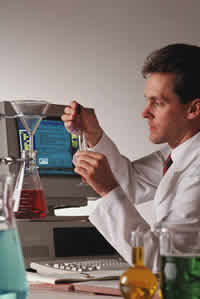 |
| Bacteria come in three general shapes: coccus (round bacillus (rod shaped) spirillum (spiral shaped) |
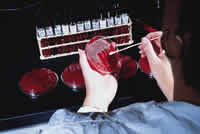 |
Some bacteria can increase virulence (strength) by secreting a slime layer on the outside of itself, which acts as protection (from things like antibiotics).
Food poisoning is caused by particular kinds of bacteria in the food consumed, either reproducing in your digestive tract, or producing a toxin (poison), that remains after cooking.
There are 4 main types of food poisoning:
1. Salmonellosis
-caused by salmonella bacteria
-some of the symptoms include severe headaches, vomiting, diarrhea,cramps, fever
-can last several days
-found in chicken, turkey, & egg containing foods, like egg salad and meringue
-can be prevented proper refrigeration and reheating completely
2. Perfringens Poisoning
-caused by a bacterium can survive cooking temperatures called clostridium perfringens
-some symptoms include nausea, diarrhea, cramps usually only lasts for 1 day
-found in foods with gravies
-can be prevented by proper refrigeration
3. Botulism
-caused by a toxin producing bacterium called clostridium botulism, that can live in n sealed can
-some symptoms include double vision, difficulty swallowing where more that half affected die
-can be prevented proper sterilization methods (boiling for 10 to 20 minutes) before home-canning
4. Staphylococcal Poisoning
-most common caused by staphylococcus aureus (from an infection, cough or sneeze) contaminating the food
-some symptoms include vomiting, diarrhea, cramps can last 1 or 2
-daysfoods conducive to this type of bacterial growth are mayonnaise containing foods like sandwiches, pastries, custards, and salads can be prevented by proper refrigeration and reheating.
Bacterial Defenses Developed from Medical Research
The simplest defense against bacteria is preventing the infection. In 1857, Louis Pasteur first found that microbes(bacteria) cause disease. He began the process of heating milk to kill these microbes before it was cooled for human use ( process of pasteurization). In 1865, a surgeon, Joseph Lister, applied Pasteur's theories to his surgical practice. He found that by destroying microbes in the operating room and on his hands, using disinfectants, before the operation, many more of his patients survived.
When infections do occur, we need additional help. Until well into the twentieth century, there was very little we could do. In 1938, Alexander Fleming noticed that some bacteria growing in his lab were dying when they grew close to the mold Penicillium. This led to the development of the drug penicillin - an important antibiotic. It works by breaking down the wall of the bacteria cell, thus killing the bacteria. It does not work on a virus. Since that time there have been many other antibiotics developed which have greatly improved our ability to recover from bacterial infections.
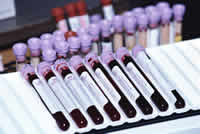
Viruses:
1. The Nature of Viruses
A virus is a very small non-cellular particle that cannot reproduce on its own. The virus must take over the cell of another living thing in order to make new viruses. Some examples of virus caused diseases include mumps, measles, chicken pox, the common cold and AIDS.
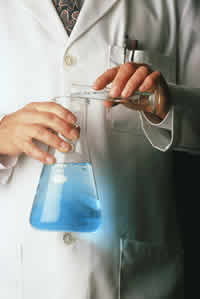
Viruses were first studied in 1892, but they could not be seen until 1944 when the electron microscope was perfected (because viruses are too small to be seen without high level magnification).
2. Our Natural Defenses against Viruses
Once again the best defense against a virus is to prevent it entering our bodies. Since viruses are so very small, it is easier for them to enter the body and so techniques like thorough hand washing and avoiding coughs will help.
When a viral infection has occurred, we are dependent on our own immune system. Antibiotics will not work as they break down cell walls and a virus does not have a cell wall. There are very few options for treatment of a viral infection that are effective. If you see your doctor and you are told you have a bad cold, the treatment will likely be plenty of fluids and rest for a couple of weeks. This is to allow your own immune system to defeat the virus.
Viral Defenses Developed from Medical Research
About 200 years ago, many people died from smallpox. In 1796, a doctor Edward Jenner noticed that milkmaid that got a mild form of this disease called cowpox, seemed to be immune to the much more serious smallpox. Somehow, the milder disease was protecting people from the much more serious disease. He actually injected the cowpox pus into a healthy boy. Months later, the boy did not get smallpox when everyone else in his family did. This was the first vaccine. A vaccine is an injection of dead disease organisms. This allows our bodies to make antibodies to this disease. Then if we come into contact with the actual disease organism, the body is ready to flight it off. This is known as immunization for the disease.
HOW DOES IMMUNIZATION WORK?
The general process involved with an immunization is:
| i. the dead virus is injected into your body | 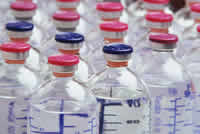 |
|
stream and begins to make special cells called antibodies. |
|
iii. The antibodies prepare to attack and kill the foreign dead virus cells. They are now ready and available (in the bloodstream) to kill any new living viruses that may enter the body. This prevents the new, living virus from reproducing and causing damage to the body.
Antibodies are also formed naturally by contracting (catching) the disease. The antibodies made from the disease are prepared to attack anymore of the same virus cells entering the body. Antibodies can live from a few days to several years, depending on the individual and the type of antibody formed.
Viruses can mutate or change in strength (virulence) , and they require the use of immunization to prevent the outbreak or onset of the disease. This is not a cure for the disease but rather a means of controlling the disease
Comparison between Bacteria and Viruses
|
BACTERIA
|
VIRUSES
|
|
| Size |
seen under a microscope
|
very, very small
|
| Treatment |
antibiotics are used to kill bacteria
|
no drugs kill viruses
|
| Shape |
three basic shapes
|
many shapes
|
| Structure |
complete cells
|
only two main parts (protein coat and nucleic acid core)
|
Did you notice that we did not talk about treatment for a virus once you have it? That is because there are very few effective treatments. Antibiotics do nothing to a virus. Only your own immune system can defeat the virus infection.
|
1. Using an encyclopedia and Internet research resources, write a short report on three different diseases or illnesses:
2. For each disease or illness, explain:
|
© 2002 Alberta Online Consortium
